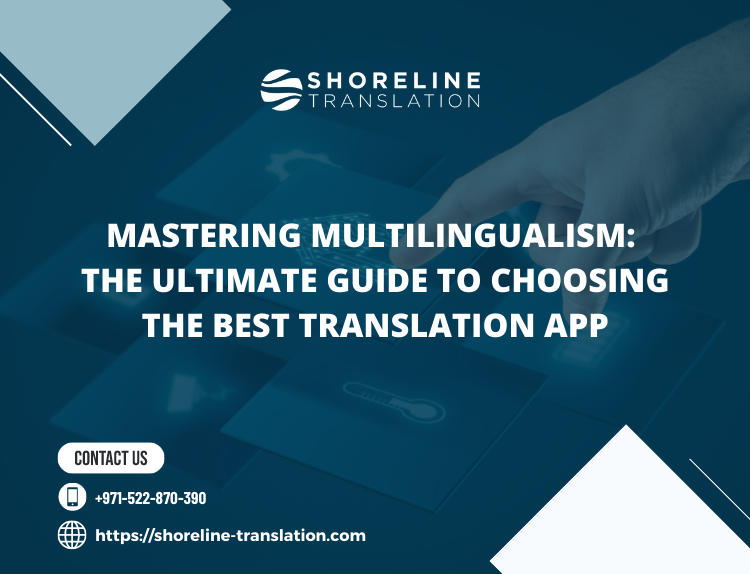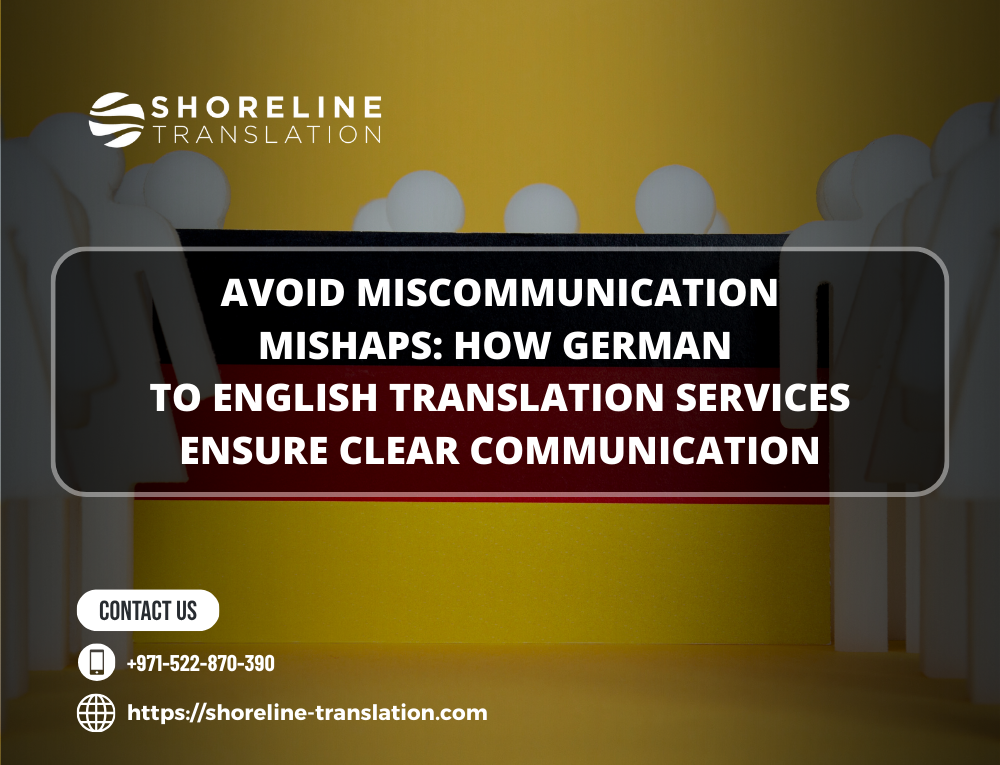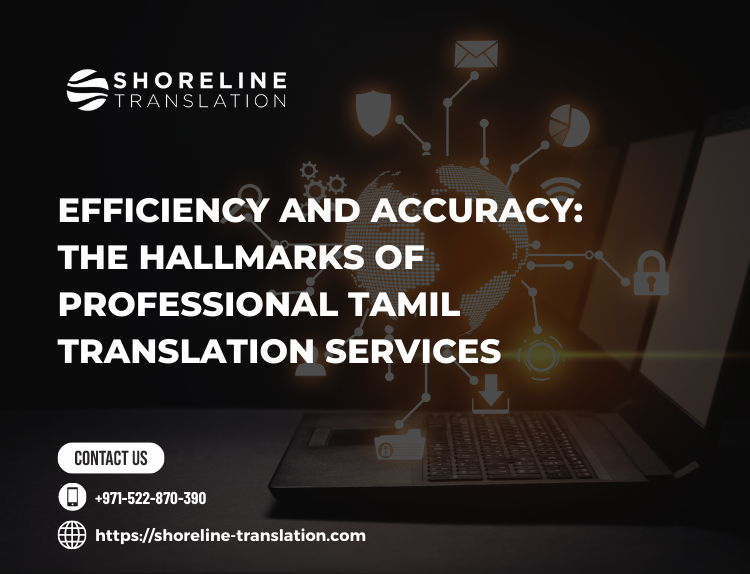Table of Contents
ToggleMastering Multilingualism: The Ultimate Guide to Choosing the Best Translation App
I. Introduction
Are you ready to conquer language barriers and unlock a world of communication possibilities? In our increasingly globalized society, being multilingual has become not just an asset, but a necessity. Whether you’re traveling abroad, conducting business internationally, or simply trying to connect with people from different cultures, having a reliable translation app at your fingertips can make all the difference.
But with so many options available in the market today, how do you choose the best translation app for your needs? Fear not! In this comprehensive guide, we’ll walk you through everything you need to know about selecting the perfect language companion. From assessing accuracy and reliability to considering language support and user-friendliness, we’ve got you covered.
So sit back, relax, and get ready to embark on a journey of linguistic exploration as we delve into the world of translation apps. Get ready to break down those language barriers like never before!

II. Understanding Multilingualism and Translation Apps
Multilingualism is the ability to communicate in multiple languages, and with the increasing globalization of our world, it has become an indispensable skill. However, not everyone is fluent in multiple languages. That’s where translation apps come into play. These handy tools can bridge language barriers and facilitate seamless communication.
Translation apps are designed to convert text or speech from one language into another, making them incredibly useful for travelers, businesses operating internationally, or anyone who needs quick translations on the go. They leverage advanced technologies like machine learning and artificial intelligence to provide accurate and reliable translations in real time.
When choosing a translation app, several factors should be considered. First and foremost is accuracy and reliability. After all, what good is a translation if it’s inaccurate? It’s important to assess the app’s track record for delivering precise translations by reading user reviews or trying out sample translations yourself.
Another crucial factor is the language support. The best translation apps offer extensive coverage of various languages worldwide. Consider both source and target languages when evaluating an app as you want it to support your specific linguistic needs.
User-friendliness plays a key role in determining which translation app suits you best. Look for features like voice recognition that allow you to simply speak your phrases instead of typing them out manually. Offline mode can also be valuable when traveling without internet access.
III. Factors to Consider When Choosing a Translation App
When it comes to choosing a translation app, there are several important factors that you need to consider. One of the most crucial aspects is accuracy and reliability. After all, what good is a translation app if it can’t provide accurate translations? To assess this, look for reviews or user feedback on the app’s performance in terms of accuracy.
Another factor to consider is language support. A good translation app should have a wide range of languages available for both source and target languages. The more languages supported, the better chances you have of finding the specific language pair you need. Make sure to check if your desired languages are included before making your decision.
User-friendliness and interface play an essential role as well. An intuitive user interface will make using the app much easier and more enjoyable. Look for features like voice recognition, offline mode, and ease of navigation when evaluating different apps. These features can greatly enhance your overall experience with the app.
Accuracy and reliability, language support, and user-friendliness are key factors to consider when choosing a translation app. By taking these into account along with any additional features or integrations that may be important to you personally, you’ll be able to find the best translation app that suits your needs perfectly
A. Accuracy and Reliability
Accuracy and reliability are paramount when it comes to choosing a translation app. After all, the whole purpose of using such an app is to ensure that your translations are accurate and reliable. You don’t want any miscommunications or misunderstandings due to incorrect translations!
So how can you assess the accuracy and reliability of a translation app? One tip is to read reviews and feedback from other users. Their experiences can give you valuable insights into whether the app delivers on its promises. Additionally, consider testing the app yourself by translating simple phrases in different languages to see if the results are accurate.
Remember, accuracy is key when it comes to translation apps. Make sure you choose one that has a proven track record for providing reliable translations so that you can confidently communicate across languages without any worries!
1. The importance of accurate translations
Accurate translations are crucial when it comes to language barriers. Whether you’re traveling, conducting business internationally, or simply trying to communicate with someone from a different culture, the accuracy of your translations can make all the difference. A single mistranslated word or phrase can lead to misunderstandings and even embarrassment.
Imagine being in a foreign country and relying on a translation app that consistently provides inaccurate translations. It could result in ordering the wrong dish at a restaurant or getting lost because of incorrect directions. Accuracy is key for effective communication, building relationships, and avoiding potentially awkward situations.
To ensure accurate translations, it’s important to choose a translation app that has been tested and proven reliable by users. Look for apps that have positive reviews specifically mentioning accuracy. Additionally, consider testing out the app yourself by translating simple phrases or sentences to see how accurately they are translated.
Remember that accurate translations go beyond just words – they should also capture cultural nuances and context accurately. So pay attention not only to individual word translations but also to how well the overall meaning is conveyed across languages. By prioritizing accuracy in your choice of translation app, you can confidently navigate multilingual situations without any unnecessary confusion or miscommunication.
2. Tips on how to assess the accuracy and reliability of a translation app
When it comes to choosing the best translation app, accuracy and reliability are crucial factors to consider. After all, what good is a translation if it’s not accurate? Here are some tips on how to assess the accuracy and reliability of a translation app.
Read reviews and testimonials from other users. Their experiences can give you valuable insights into the app’s performance and whether or not it delivers accurate translations. Look for patterns in the feedback to get an overall impression of its reliability.
Test the app yourself with simple phrases or sentences in different languages. Compare the translations provided by multiple apps to see which one consistently produces more accurate results. This hands-on approach will help you gauge their reliability firsthand.
Consider seeking recommendations from language experts or professional translators who have experience using various translation apps. Their expertise can provide valuable guidance on which apps are known for their accuracy and reliability in specific language pairs.
Remember, accuracy and reliability should be at the top of your list when evaluating translation apps! By following these tips, you’ll be well-equipped to choose an app that meets your multilingual needs without compromising on quality.
B. Language Support
The significance of language support cannot be overstated when it comes to choosing the best translation app. After all, the whole purpose of using a translation app is to accurately and effectively communicate in different languages.
When evaluating language support, it’s essential to consider both the source and target languages that you will be working with. The more languages supported by the app, the wider your communication capabilities will be. It’s also crucial to ensure that the app offers accurate translations for these specific languages.
Having access to a wide range of languages can help you navigate various situations, whether it’s traveling abroad or conducting international business. So remember, when selecting a translation app, always prioritize comprehensive language coverage for seamless multilingual communication!
1. The significance of language coverage
Language coverage is a crucial factor to consider when choosing a translation app. The significance of having extensive language support cannot be overstated. A translation app that supports a wide range of languages ensures that you can communicate effectively with people from different linguistic backgrounds.
Having comprehensive language coverage means that the app has translations available for both common and less commonly spoken languages. This is particularly important if you frequently travel or work in multilingual environments where you may encounter various languages regularly.
A translation app with extensive language coverage allows for more accurate and reliable translations, as it increases the chances of finding the right match between source and target languages. Whether you need to translate from English to Spanish or from Mandarin Chinese to French, having a vast selection of supported languages gives you greater flexibility in your communication needs.
Language coverage plays an integral role in determining the effectiveness and versatility of a translation app. It opens up opportunities for seamless cross-cultural communication and breaks down language barriers, making it an essential consideration when selecting the best translation app for your needs.
2. The importance of considering both source and target languages
When choosing a translation app, it’s crucial to consider both the source and target languages. Why is this important? Well, different apps may have varying levels of proficiency in translating certain languages. Some apps might excel at translating English to Spanish but struggle with Chinese or Arabic translations.
By considering both the source and target languages, you ensure that the app you choose can accurately handle the specific language pair you need. This is especially important if you frequently work or communicate with people from diverse linguistic backgrounds.
Additionally, by selecting an app that supports multiple languages, you’ll have greater flexibility and versatility in your translation needs. Whether it’s for business purposes or personal use during travel, having a wide range of language support will make your multilingual journey smoother and more efficient.
C. User-Friendliness and Interface
When it comes to choosing a translation app, user-friendliness and interface play a crucial role. After all, you want an app that is intuitive and easy to navigate, right? A cluttered or confusing interface can be a major turnoff. So, look for an app with a clean design that allows you to quickly access the features you need.
Another important aspect is voice recognition. Wouldn’t it be great if you could simply speak into your phone and have it translate your words instantly? Many translation apps now offer this feature, making communication even easier. Additionally, consider whether the app has an offline mode option. This way, you can use the app without an internet connection while traveling abroad.
Pay attention to how comfortable you feel using the app overall. Is everything laid out logically? Are there any additional features like text-to-speech or image translation that would enhance your experience? These factors contribute to how user-friendly and convenient the translation app will be for your specific needs.
1. The importance of an intuitive user interface
An intuitive user interface is crucial when it comes to choosing a translation app. Why? Well, think about it – if the app is difficult to navigate or understand, it defeats the purpose of having a translation tool in the first place! The whole point of using an app is to make our lives easier and more convenient. So, when selecting a translation app, always prioritize one with an intuitive user interface.
A user-friendly design ensures that you can easily navigate through different functions and features without feeling overwhelmed or confused. It should be straightforward to understand, even for those who are not tech-savvy. Look for apps that have clear icons and labels, making it simple for users to find what they need quickly.
Another aspect of an intuitive user interface is the inclusion of features like voice recognition. This allows users to simply speak into their device instead of typing out text manually. Additionally, offline mode is another important feature as it enables translations even when there’s no internet connection available. These elements contribute to a seamless experience and enhance overall usability.
Remember: an intuitive user interface should not be overlooked when selecting the best translation app for your needs. It plays a vital role in ensuring ease of use and maximizing efficiency during your multilingual adventures!
2. Features like voice recognition, offline mode, and ease of navigation
When choosing a translation app, it’s crucial to consider its features. One important feature to look for is voice recognition. With this capability, you can simply speak into your device and have the translation instantly generated. This not only saves time but also allows for more accurate translations.
Another useful feature is offline mode. This means that even without an internet connection, you can still access and use the app for translations. So whether you’re traveling in remote areas or experiencing connectivity issues, you can rely on the app to help with your language needs.
Ease of navigation is key when using a translation app. Look for an intuitive user interface that makes it easy to navigate between different features and options. A well-designed app will ensure that you can quickly find what you need and make seamless translations without any confusion.
By considering these important features like voice recognition, offline mode, and ease of navigation in a translation app, you’ll be able to find one that suits your needs perfectly!
D. Additional Features and Integration
When it comes to choosing the best translation app, it’s important to consider the additional features and integration options available. These can greatly enhance your overall experience and make the app even more versatile.
Look for apps that provide extra features like offline translation capabilities. This can be incredibly useful when traveling or in areas with limited internet access. Additionally, having a built-in dictionary can help you understand unfamiliar words on the go.
Integration is another crucial aspect to consider. Some translation apps seamlessly integrate with messaging platforms or travel apps, allowing you to translate conversations in real-time or navigate foreign cities effortlessly.
By carefully evaluating these additional features and integration options, you’ll be able to find a translation app that perfectly suits your needs and enhances your multilingual journey!
1. Extra features such as offline translation, dictionary, and transcription
When it comes to choosing the best translation app, it’s essential to consider the extra features that can enhance your language learning experience. One of these features is offline translation, which allows you to access translations even when you don’t have an internet connection. This can be particularly useful when traveling abroad or in areas with limited connectivity.
Another valuable feature is a built-in dictionary. Having access to a comprehensive and reliable dictionary within your translation app makes it easier to understand unfamiliar words and phrases on the go. It eliminates the need for carrying around heavy dictionaries or searching for definitions online separately.
Additionally, some advanced translation apps offer transcription capabilities. This means they can convert spoken language into written text accurately and quickly. This feature is especially beneficial when attending lectures, interviews, or meetings where taking notes might be challenging. With transcription support integrated into your chosen app, you can effortlessly capture important information without missing any crucial details.
By considering these extra features like offline translation, dictionary access, and transcription capabilities in a translation app, you can ensure that your language learning journey becomes more seamless and enjoyable!
2. Integration with other apps or platforms (e.g., messaging apps, travel apps)
When choosing a translation app, it’s essential to consider its integration with other apps or platforms. Integration can greatly enhance the functionality and convenience of the app. For example, if you frequently use messaging apps like WhatsApp or WeChat, having a translation app that seamlessly integrates with these platforms allows you to translate conversations in real time without switching between apps.
Integration with travel apps is also beneficial for those who frequently travel abroad. Many translation apps now offer integration with popular travel platforms like TripAdvisor or Airbnb. This means you can easily translate reviews, descriptions, and messages within these apps without any hassle.
Furthermore, some translation apps even integrate with social media platforms like Facebook or Instagram. This feature enables easy translation of posts and comments from different languages into your preferred language, helping you stay connected and engaged across cultures.
By choosing a translation app that offers seamless integration with other relevant apps or platforms in your daily life, you can maximize its usefulness and save time while communicating effectively in multiple languages!
IV. Top Translation Apps on the Market
When it comes to translation apps, there are a plethora of options available on the market. To help you find the best one for your needs, we have compiled a list of top translation apps that stand out from the rest.
1. Google Translate: This app is widely regarded as one of the best in terms of accuracy and language support. It covers over 100 languages and offers features like voice recognition and offline mode.
2. Microsoft Translator: Known for its reliability, this app supports more than 60 languages and boasts an intuitive user interface. It also has additional features such as multi-device conversation translations and real-time text transcription.
3. iTranslate: With its sleek design and user-friendly interface, iTranslate is perfect for those who value aesthetics along with functionality. It supports over 100 languages, offers offline mode, and even integrates with other popular apps like Safari or WhatsApp.
These top translation apps have their unique strengths, so be sure to evaluate them based on your specific requirements before making a final decision!
V. How to Make the Final Decision
Compare the features and strengths of the recommended apps. Take a closer look at each app’s accuracy, language support, user-friendliness, and additional features. Consider how they align with your specific needs and preferences.
Next, factor in your requirements. Are you primarily translating for business purposes or personal use? Do you need voice recognition capabilities or offline mode? Evaluate which app offers the most valuable tools for your unique situation.
Take a step-by-step approach to evaluate and choose the best translation app. Test out different apps by translating sample texts or using voice input. Pay attention to their speed and ease of navigation. Don’t hesitate to read reviews or seek recommendations from trusted sources.
Remember, selecting the best translation app is subjective based on individual needs. By comparing features, considering requirements, and taking a systematic approach to evaluation, you can confidently make an informed decision that suits your multilingualism goals!
A. Compare the features and strengths of the recommended apps
When it comes to choosing the best translation app, comparing the features and strengths of different options is crucial. Take a closer look at each recommended app and see what sets them apart from the rest. One app might excel in accuracy and reliability, while another might offer a wide range of language support.
Consider factors like user-friendliness and interface as well. An intuitive user interface can make all the difference when you’re trying to quickly translate a phrase or sentence on the go. Look for features like voice recognition, offline mode, and ease of navigation that enhance your overall experience.
Don’t forget about additional features and integration possibilities! Some apps go above and beyond by offering offline translation capabilities, integrated dictionaries, or even transcription services. Think about how these extra perks align with your specific needs or use cases. Integration with other apps or platforms can also be convenient – imagine translating messages directly within your favorite messaging app or using a translation app seamlessly with travel planning tools.
Remember: comparing the features and strengths of recommended translation apps will help you narrow down your options based on what matters most to you – accuracy, language support, user-friendliness, and additional features – so don’t rush this step!
B. Factors to consider based on individual needs and preferences
When it comes to choosing the best translation app for your needs, there are a few factors that you should consider based on your individual preferences. First and foremost, think about the languages you will be translating most frequently. Some apps specialize in specific language pairs or have better support for certain languages. Consider whether the app supports both the source and target languages you need.
Next, think about how user-friendly an app is for you. Look for features like voice recognition that allow you to easily input text by speaking rather than typing. Offline mode can also be important if you often find yourself without internet access while traveling or working in remote locations.
Take into account any additional features or integrations that may enhance your experience with a translation app. For example, some apps offer offline translation capabilities or include dictionaries and transcription tools. Integration with other apps or platforms such as messaging apps or travel planning tools can also streamline your workflow.
Remember, everyone’s needs and preferences are different, so consider these factors when making your decision on which translation app is best suited to meet YOUR requirements!
C. Step-by-step guide on evaluating and choosing the best translation app
Choosing the best translation app may seem like a daunting task, but with a step-by-step approach, you can find the perfect one for your needs.
First, compare the features and strengths of the recommended apps. Look for accuracy, language support, user-friendliness, and additional features like offline translation or integration with other apps.
Next, consider factors based on your individual needs and preferences. Do you need voice recognition? Offline mode? An easy-to-navigate interface? Think about what will make your translating experience seamless and efficient.
Evaluate each app by trying them out yourself. Test their translations in various languages to assess accuracy. Explore their interfaces to see if they are intuitive and easy to use. By following these steps, you’ll be well on your way to mastering multilingualism with the best translation app for you!
VI. Conclusion
Choosing the best translation app can greatly enhance your multilingual journey, whether you’re traveling abroad, conducting business internationally, or simply expanding your language skills. By considering factors such as accuracy and reliability, language support, user-friendliness and interface, and additional features and integration, you’ll be well on your way to finding the perfect translation app for your needs.
After researching the top translation apps on the market and evaluating their features and strengths, it’s important to make a decision based on individual preferences. Consider what matters most to you in terms of functionality, ease of use, and compatibility with other apps or platforms.
To help guide you through this process:
1. Compare the features of recommended apps: Take into account their accuracy rates, language coverage capabilities (both source and target languages), user-friendly interfaces with voice recognition options, or offline mode availability.
2. Assess individual needs: Determine which additional features are crucial for your specific requirements – like having an offline dictionary or transcription service –and choose accordingly.
3. Evaluate step-by-step: Follow a structured approach when evaluating different translation apps by testing them out in real-world scenarios that align with your intended usage.
Remember that choosing the best translation app is a personal decision that ultimately depends on what works best for you. While one app may excel in certain areas such as accuracy or user-friendliness, another may shine due to its extensive language support or integration capabilities.
So take some time to explore these options thoroughly before making a final choice!





